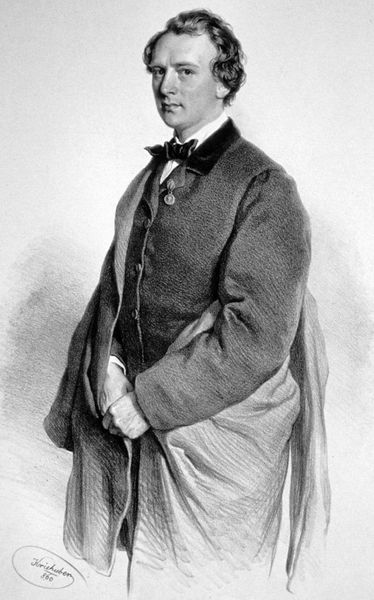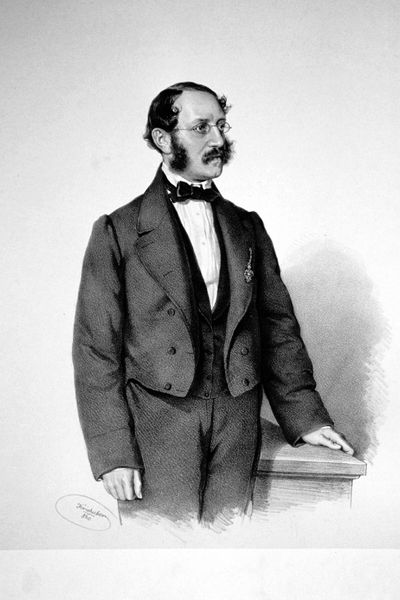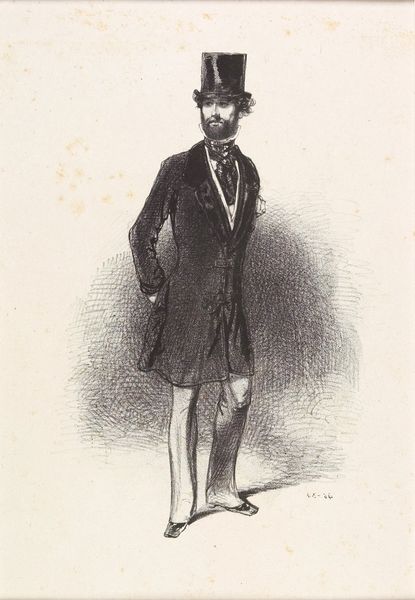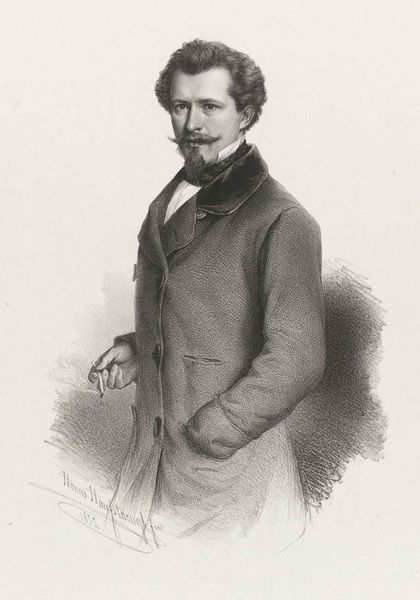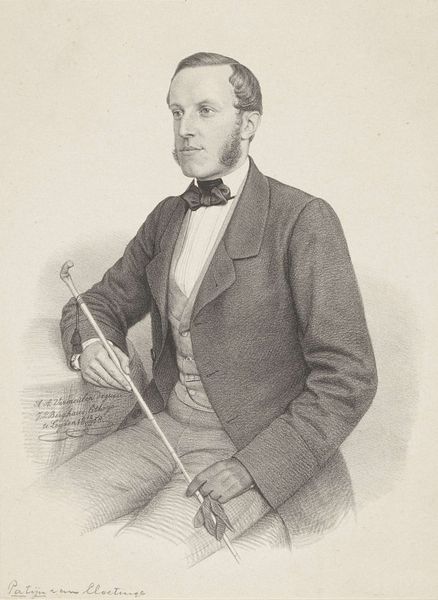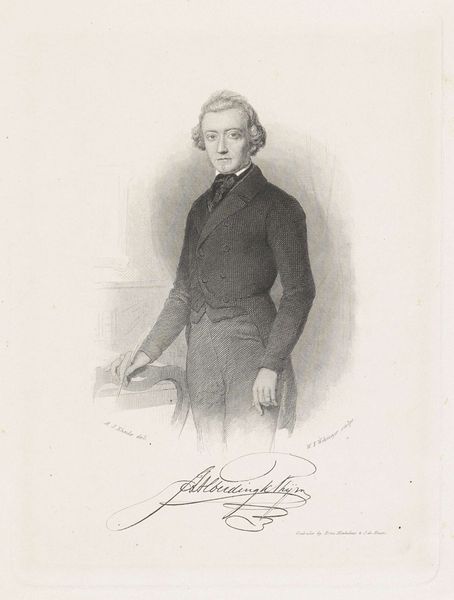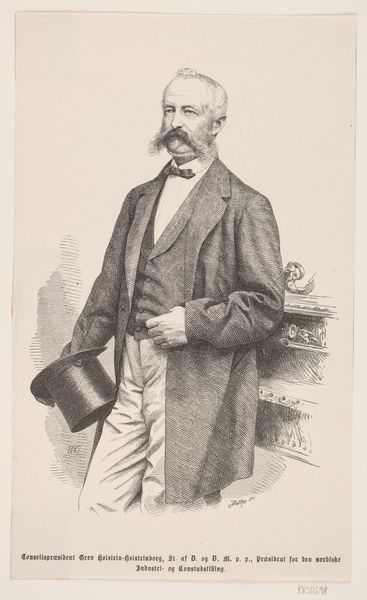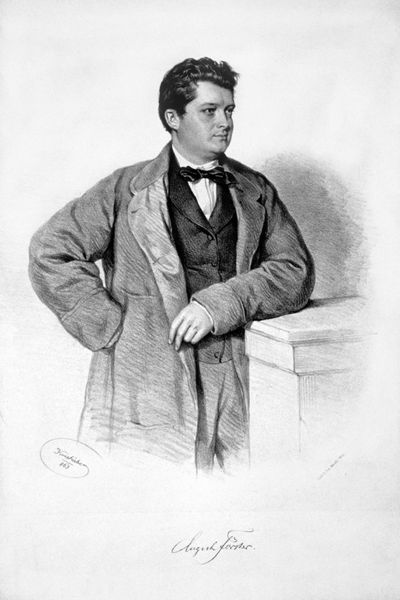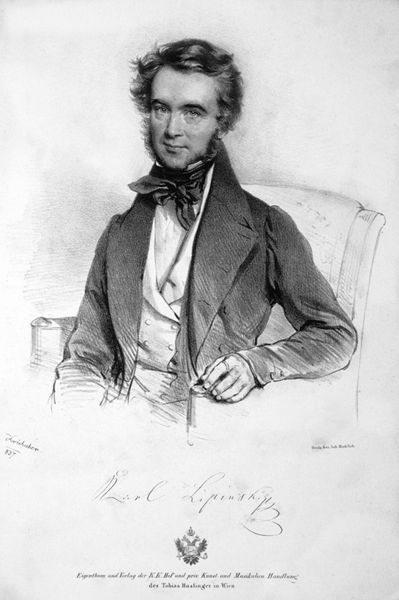
Copyright: Public domain
This is Josef Kriehuber's lithograph of Karl Von Giskra, an Austrian politician, made sometime in the mid-19th century. Lithography allowed for the relatively quick and inexpensive production of images, serving a growing public sphere. Giskra's soberly tailored suit, bow tie, and neatly trimmed beard mark him as a man of his time. His confident posture and the books at his side signal learning and authority. But what kind of authority? Austria in this period was experiencing rapid industrialization and social change, and its political institutions were struggling to adapt. Looking at Giskra's career through archival records, we see that he was a liberal politician who advocated for constitutional reform and greater rights for citizens. Kriehuber's portrait thus becomes a potent symbol of a changing Austria, one in which new ideas about governance were taking hold. The artwork's meaning isn't fixed but changes as we learn more about the social and institutional contexts that shaped its creation.
Comments
No comments
Be the first to comment and join the conversation on the ultimate creative platform.
